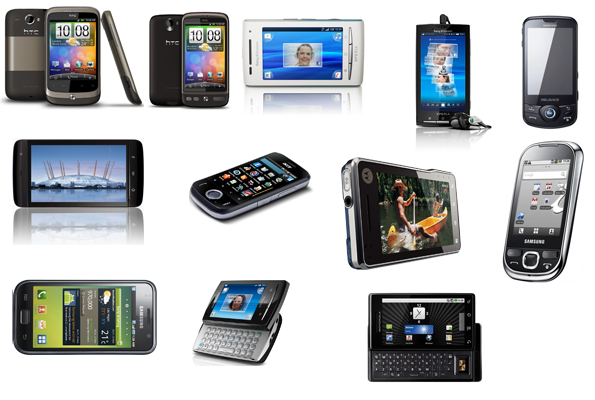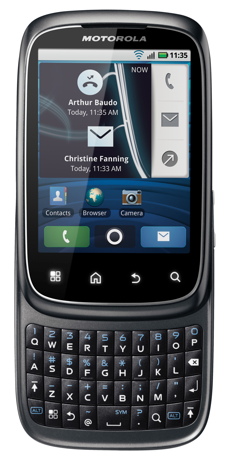5 Disruptive Technologies of 2010 - Part 2 : Android phones
 Thursday, December 2, 2010 at 5:33PM
Thursday, December 2, 2010 at 5:33PM 

2010 has been all about Google's Android OS and the deluge of handsets that have hit the Canadian market and the the rest of the world. Looking back at the very first Android phone, the T-Mobile G1 and its then infant OS and comparing it to the rich and often confusing tapestry of Android devices in the market now, Google has sure come a long way. Now that 83% of Android handsets are running version 2.1 or higher we may be seeing the end of the dreaded OS fragmentation.
You can get an Android phone on almost any carrier ar almost any price-point and we have a range of models that run the gamut of designs. Everything from candybar touch-focused devices to models with slide out QWERTY keyboards to odd implementations of flipping screens (like Motorola's novel and daring designs on the FlipOut, Quench and Charm).
 We've reviewed a lot of Android phones this year and while a number have been really amazing flagship products (like the Samsung Galaxy S Vibrant, The HTC Desire Z, the Motorola Milestone and the Google Nexus One) we're actually more impressed by the staggering selection of midrange models that have been released.
We've reviewed a lot of Android phones this year and while a number have been really amazing flagship products (like the Samsung Galaxy S Vibrant, The HTC Desire Z, the Motorola Milestone and the Google Nexus One) we're actually more impressed by the staggering selection of midrange models that have been released.
We predict that the earlier versions of the Android OS will be making their way to feature phones in 2011 (it has already started with models like the Motorola i1, the Motorola Spice (right photo), and the Samsung Galaxy 550) all bring recent versions of the OS a very usable feature set as well as access to the Android Marketplace.
A Story of Skins
Each major Android handset manufacturer has pushed it's own aesthetic and functional focus by way of skins or overlays that run on top of the Android OS.
HTC has its Sense UI, Motorola has MotoBLUR, Samsung has TouchWIZ and Sony Ericsson has Timescape. Many of these offer shortcuts to apps, widgets and social media streams and also offer varied look-and-feel elements by way of themes, background images and icons.
While these UI enhancement do bring many of Android's features forward they also hinder the process of easy software updates. Android OS upgrades regularly and would get to user's and devices sooner if the core OS did not need to undergo testing and integration with the manufacturer's skins.
Hopefully, as things move forward we can expect Google, the handset manufacturers and the carriers to work together to continue.
Is Android expected to dominate in 2011? We think so, specially as devices begin to have more uniform versions of the OS and more carriers start to offer a wider range of choices. Google's strategy of carpet bombing the market with devices of different designs and through different carriers is unprecedented and bold but more importantly it is successful.
5 Disruptive Technologies of 2010 - Part 1: Tablets
- Part 3: DSLR video




















Reader Comments